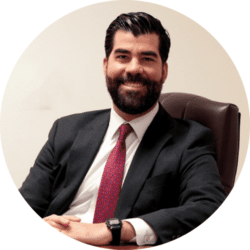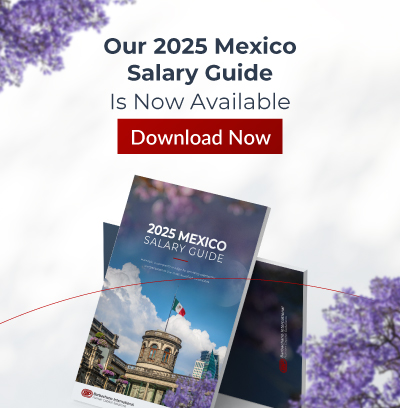
There was a time when a successful executive career followed a predictable rhythm: steady promotions within one company or industry, culminating in a C-suite position and a long tenure. That path still exists—but it’s no longer the rule. More often, we’re seeing leaders who’ve pivoted industries, switched functions, paused to launch a business, or taken time to consult or study abroad.
These careers don’t follow a straight line. And increasingly, they reflect the kind of executive mindset companies now need.
Rethinking the Resume
This shift—what some have called the rise of the “squiggly career”—isn’t just anecdotal. According to a Harris Poll via PR Newswire, over half of U.S. job seekers are actively considering a move to a new industry or function. This isn’t limited to early-career professionals; it’s happening at the executive level too.
And it’s not about instability. It’s about intentionality—executives choosing roles that align with their values, challenge their thinking, or expose them to new business models.
Still, many hiring teams are slow to adjust. Relying too heavily on industry continuity or ladder-like progression can overlook leadership potential. Someone who’s spent 20 years in one sector might know it deeply—but someone who’s applied their leadership across four industries may bring better pattern recognition, cultural sensitivity, and problem-solving range.
From Linear to Lateral
A non-traditional background doesn’t mean someone lacks depth or focus. In many cases, it’s the opposite. A leader who’s shifted roles or sectors has likely stepped outside of their comfort zone more than once—and succeeded.
Forbes reports that professionals who move laterally, or even diagonally, tend to have stronger alignment between their personal values and professional roles. That alignment often translates into more engaged, resilient leaders.
This also reflects broader trends in how people define career success. Impact, flexibility, and growth are replacing title prestige as the markers of progress. That doesn’t mean ambition has disappeared—it means it’s being measured differently.
What Hiring Teams Should Look For
If leadership roles are still being filled based on the neatness of a résumé, companies are likely missing out on bold, effective executives.
Here’s what forward-thinking organizations and some of our successful clients are doing instead:
- Evaluating impact, not just tenure. Did this candidate lead transformation? Did they manage complexity? How did their team grow under their leadership?
- Considering cross-functional, cross-industry, and cross-cultural experience as a strength. Leaders who’ve operated in different environments (i.e. technology, industrial / manufacturing, consumer products) and different countries, tend to be more resourceful and quicker to adapt.
- Reading between the lines. Some of the best candidates won’t have the “perfect” résumé on paper. But their lived experience tells a richer story—one of learning, reinvention, adaptation, and curiosity.
- Using tools to widen the lens. AI-assisted search platforms can surface candidates who match a role based on outcomes and capabilities, not just job titles. As noted in this executive search trends piece, this technology is helping uncover talent that would’ve been filtered out under traditional systems.
Making Room for Growth-Oriented Leaders
The best leaders aren’t just those who’ve done the job before. They’re the ones who can step into unfamiliar terrain and still deliver clarity, direction, and results.
That kind of leadership often comes from non-linear experience. It comes from launching something new, taking an expat assignment, managing risk, changing sectors, or leading in a downturn. These aren’t footnotes—they’re indicators of capability.
Upskilling and continued learning also play a part. Executives who regularly invest in their development—through platforms like LinkedIn Learning, edX, or Coursera—signal that they’re not standing still, regardless of what their last job title was.
Leadership Isn’t Always a Ladder
Some of today’s most respected executives have taken an unconventional path. James Gorman, former CEO of Morgan Stanley, has transitioned into a portfolio career—offering his leadership across boards and advisory roles. It’s a model more executives are exploring, blending purpose with professional impact.
Others are stepping off the traditional track for a time—consulting, mentoring, even sabbaticals—only to return with a sharper perspective. These aren’t career detours. They’re choices made with intention.
The polished résumé with perfect symmetry and a single-sector climb isn’t the gold standard anymore. What’s rising in its place is a more agile, more layered kind of career story—one that reflects a changing world and the leaders needed to thrive in it.
The hiring question has shifted. It’s no longer “Has this candidate followed the expected path?” It’s: “Can they lead through change? Can they rally teams? Can they think bigger and build what’s next?”
Often, the answer lies in the stories between the lines.

By Octavio Lepe
Executive Vice-President
Octavio is the search practice leader for Executive Management, Food & Agriculture, Sales & Marketing, and D&I in the Americas.
Barbachano International is the premier executive search and leadership advisory firm in the Americas (USA, Mexico, Canada, and Latin America) with a focus on diversity and multicultural target markets. Outplacement, Exe


